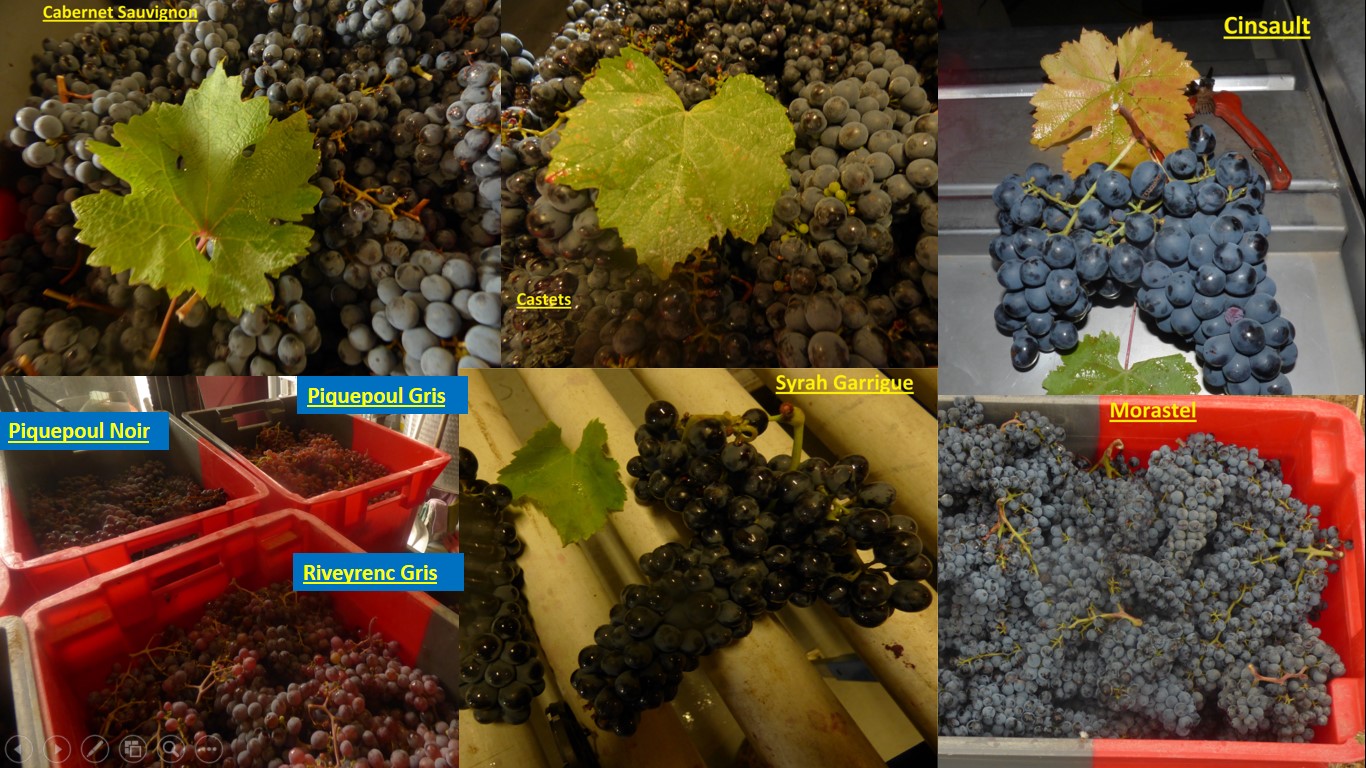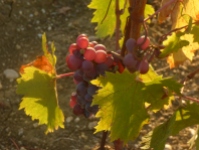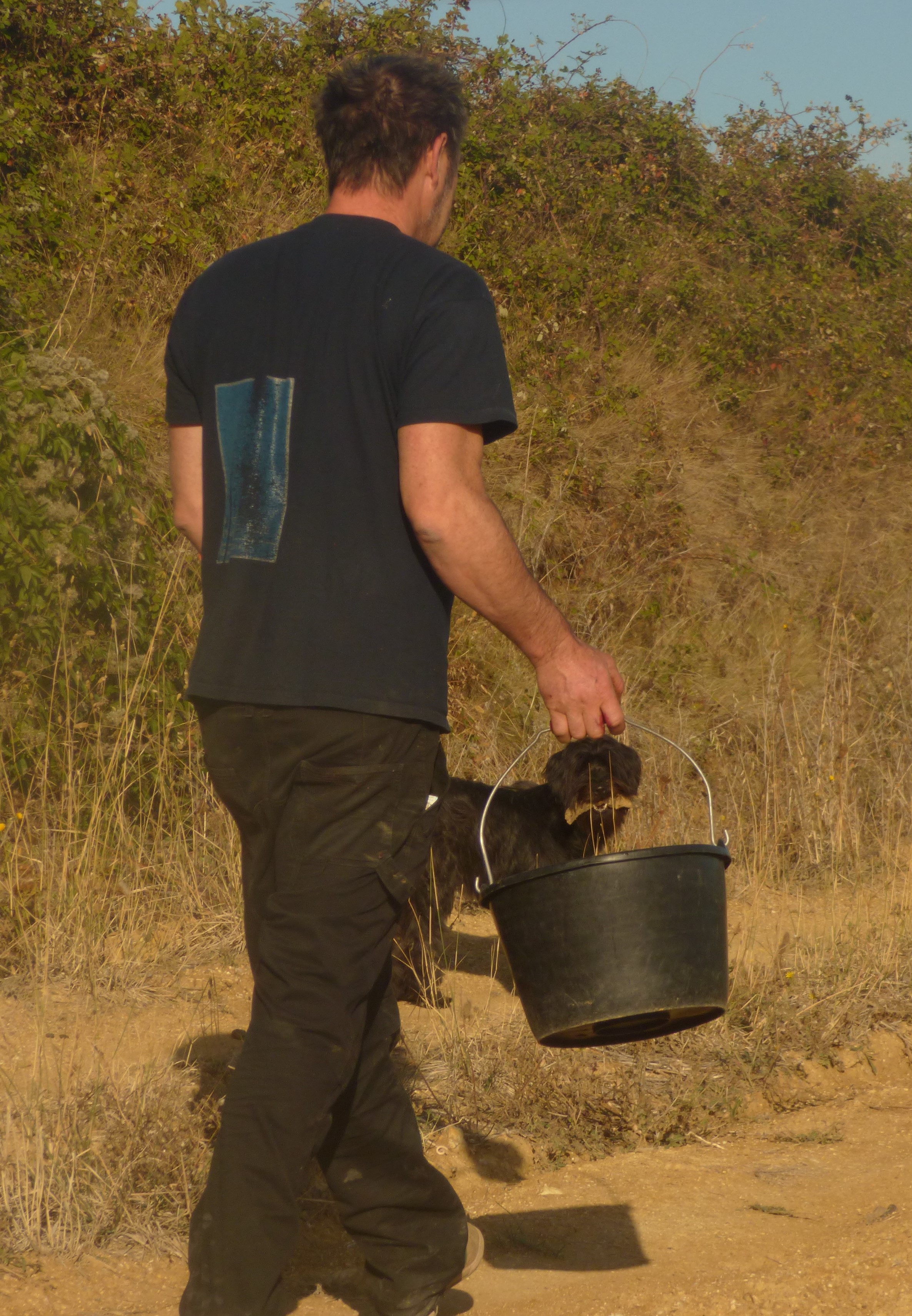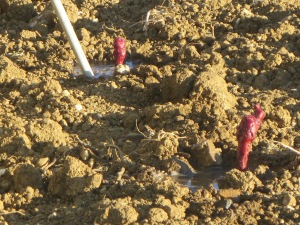Wednesday September 15th was a day of further meticulous sorting grapes for an amphora. Piquepoul Gris and Terret Blanc from Peilhan vineyard arrived first and the early cases went directly to press ready for use in blending some of the white wines of 2021. Peilhan is becoming a real hub of the domaine, the original lower level of red and white grapes added to by a terrace in 2016 with a range of grapes. In a future post I shall explain how Peilhan is to be developed further.
After an hour or so the pickers moved from the terrace of Peilhan to the white grape plot and the Muscat d’Alexandrie, some of Jeff’s personal favourites. Amphorae wines are, perhaps, most associated with the country of Georgia where whole bunches of grapes go into the vessels often buried in the ground. Jeff takes a more cautious approach to his amphorae and, as last week, the Muscat would go through a series of sorting to ensure all stalks and stems are removed. Stalks can add astringency and, in a complicated year such as this, he was taking no chances.
The grapes were sorted at the vine, then at the égrappoir and then a bunch (sorry!) of us went through the destemmed grapes to pick out every little bit of remaining stalk. Cathérine, Jeff’s sister, joined us in the task as we sat on cagettes and chatted. Also, part of the group was Jofre a young man studying hotel and catering. Jeff used to teach this course himself many years ago and always takes a student to do a placement. Jofre wants to become a sommelier, has a good deal of experience in restaurants and has worked hard during his three weeks with us.
Saturday 18th was to be the final day of picking for vendanges 21. Like the Wednesday it began with white grapes going directly to press. This time there were a range of varieties, Olivette, Servant, Terret Blanc and Clairette Rose amongst others. There are now a good number of small stainless steel tanks with small amounts of wine, a palette from which Jeff will produce the final picture of 2021 white wines.
We then moved on to the terrace at Peilhan again and picked the Riveyrenc Noir, Riveyrenc Gris and Morastell Noir (not to be confused with Monastrell, the Spanish name for Mourvèdre). The Riveyrencs were large grapes in big bunches whereas the Morastell was mainly small grapes in small, tight bunches. The latter was much easier to sort, the smaller grapes tend to be less prone to disease. As the day progressed the final section to be picked was the Castets. I wrote about this variety a few years ago when it was still unknown and rare, Jeff having some of the very few vines. Fast forward to 2021 and Castets is now an officially permitted grape in Bordeaux and its fame is growing. More small grapes in healthy bunches, a good way to complete the vendanges.
It has been a somewhat stop start harvest due to the weather, the inconsistent ripening caused by frost and drought. Through it all this has proved to be one of the best teams to work with, hard working, fun and supportive of each other. I thank them for welcoming me in as part of the team. It was a joy to be back.




























































































































